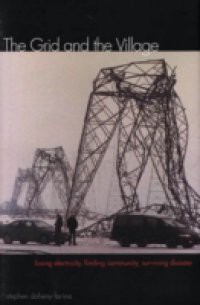In January 1998 a massive ice storm descended on New York, New England, and eastern Canada. It crushed power grids from the Great Lakes to the North Atlantic, forcing thousands of people into public shelters and leaving millions of others in their homes without electricity. In this riveting book Stephen Doheny-Farina presents an insiders account of these events, describing the destruction of the electric network in his own village and the emergence of the face-to-face interactions that took its place. His stories examine the impact of electronic communications on community, illuminating the relationship between electronic and human connections and between networks and neighborhoods, and exploring why and how media portrayals of disasters can distort authentic experience.Doheny-Farina begins by discussing the disaster and tracing the origins of the storm. He then goes back two hundred years to tell how this particular electric grid was built, showing us the sacrifices people made to create the grids that (usually) connect us to one another. Todays power grid, says Doheny-Farina, has become more vulnerable than we realize, as demand begins to outstrip capacity in urban centers around the nation. His book reminds us what those grids meanboth positively and negativelyto our electronically saturated lives.

